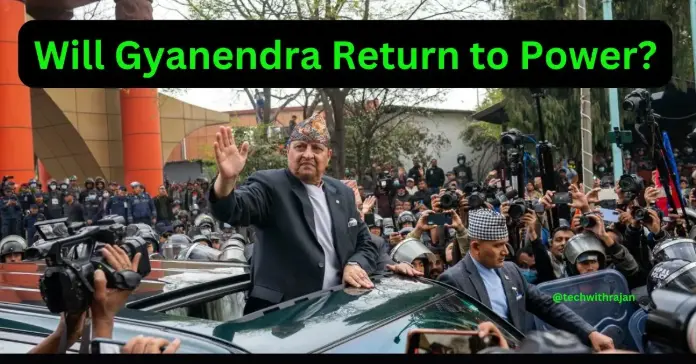The Story of Kulman Ghising: A Hero Caught in Nepal’s Political Game

Kulman Ghising was a name that brought hope to Nepal. He was the man who ended the long, dark days of load-shedding—those times when electricity would vanish for hours, leaving homes in darkness. But recently, the government decided to kick him out of his job as the boss of the Nepal Electricity Authority (NEA). They replaced him with someone named Hitendra Dev Shakya. This decision didn’t sit well with a lot of people. As soon as it was announced, folks started speaking up against it, saying it wasn’t fair. Even a big leader, Pushpa Kamal Dahal, known as Prachanda, said he was shocked and didn’t like it. He told everyone he only found out through the news and called it a bad move. But here’s the twist—there’s more to this story than meets the eye, and it’s all tied up in Nepal’s messy politics.
Let’s go back to the beginning. Kulman started working at NEA way back in 2051 B.S. as an engineer. Years later, in 2073 B.S., he got the big job of running the whole show. At that time, Prachanda was the Prime Minister, and his friend Janardan Sharma was the Energy Minister. They picked Kulman to lead NEA when things were really tough. Imagine this: power cuts for up to 18 hours a day! People couldn’t study, cook, or even see at night. Kulman stepped in with a big challenge ahead, but he didn’t back down. Within just one year, he made load-shedding disappear in Kathmandu Valley. By 2075 B.S., the whole country had no more power cuts. Everyone said, “Wow, Kulman did it!” He became a hero to many.

Before Kulman, things were different at NEA. The guy in charge back then, Mukesh Raj Kafle, didn’t do a great job. Some people found out he was giving electricity to big factories while regular homes sat in the dark. During the winter of 2070 B.S., families faced 14-hour power cuts every day. Kids couldn’t study at night, and mornings were a struggle. Meanwhile, places like Shivam Cement and other big industries got power all the time. One factory alone used enough electricity to light up 40,000 to 60,000 homes! Other companies like Reliance Spinning Mills and Hulas Steel also got special treatment. Sure, factories help the economy, but why should normal people suffer for it?
This wasn’t just unfair—it was costing NEA money. They sold power to these industries for just Rs. 7 per unit, but making that power with diesel cost Rs. 22 per unit. That’s a big loss! Who was winning here? The factory owners and the people selling generators and inverters. They worked with some shady officials to keep load-shedding going. Worse, those industries still owe NEA money for all that power they used, and it’s a fight that’s not over yet. When Kulman took over, he said, “Enough is enough.” He stopped giving special power lines to factories and shared electricity fairly with everyone. Load-shedding started shrinking fast.
Kulman didn’t stop there. He fixed broken projects, stopped power leaks, and made NEA run better. He even gave workers extra money to keep them motivated. With help from Prachanda and Janardan Sharma, who were both from the Maoist party, he wiped out load-shedding for good. The Maoists loved this—they bragged about it too, saying they helped make it happen. People were happy, and Kulman’s name became a symbol of change. But his first term ended on Bhadra 28, 2077 (September 13, 2020). Everyone wanted him to stay—there were even protests in the streets! The government could’ve kept him, but the Prime Minister then was KP Sharma Oli from the UML party, not Prachanda. Oli said no, and Kulman had to leave.
After Kulman left, Oli put Hitendra Dev Shakya in charge. But Oli’s time as PM didn’t last—he lost power after some big political moves. Then, Sher Bahadur Deuba from Nepali Congress became PM, with the Maoists backing him up. Pampha Bhusal, another Maoist, became Energy Minister. They didn’t like Shakya, so they asked him to quit. He said, “Why should I?” So, they moved him to a fancy job at the Water and Energy Commission instead. On Shrawan 26, 2078 (August 11, 2021), Kulman came back as NEA’s boss for a second round. Things went smoothly while the Maoists were in power, but trouble started brewing when they stepped out, and Oli’s UML took over again.

Read this Article from Onlinekhabar.
From the moment Oli became PM again, it felt like he had it out for Kulman. The old factory power issue came up—those industries still hadn’t paid their bills, and Kulman wanted that money back. The government didn’t like that and tried to push him out, but it didn’t work at first. Then, a new player joined the game: Energy Minister Dipak Khadka from Congress. Khadka’s got his own baggage—he’s accused of grabbing land from the Nepal Scouts for his business and has ties to a hydropower project with Chinese investors. Being a businessman and a minister at the same time? That’s tricky. He really wanted Kulman gone, even setting up his office right at NEA to keep an eye on things. People protested, but Khadka didn’t care. He even said Kulman didn’t deserve credit for ending load-shedding—that it was all because Nepal bought power from India. That’s not true, though. The numbers show India’s power didn’t increase much—Kulman’s smart work did the trick.
So why did Kulman get the boot? Part of it was a clash between Khadka and Oli, both too stubborn to back down. But there’s more. Even the Maoists, who acted like Kulman’s buddies, had their own plans. Right before the cabinet meeting that sacked Kulman, Oli, Prachanda, and Deuba had a secret chat. Word is, they made two deals: one to fix a justice issue for the Maoists and another to ditch Kulman. Prachanda’s claim that he was surprised by the news? Sounds like a lie—he was in on it. Kulman’s term was ending anyway in August 2025, just four months away. The Maoists didn’t want him to leave quietly—they’ve got big plans. They want him to run for election in 2084 from Kathmandu, maybe even as a future Energy Minister. For that, they need people to love him, and this drama helps.

Right now, Prachanda’s playing a different game. He, Oli, and Deuba are the big three leaders everyone’s tired of—they’re always in charge and always criticized. Prachanda wants to look different. He’s doing little things like morning walks and eating local food to seem relatable. Kicking Kulman out gives him a chance to stir up trouble and lead protests. The Maoists already planned one for Chaitra 15 (March 28). Kulman’s just a pawn here—Prachanda’s using him to save his own party’s future. It’s sad because Kulman really did amazing things. If he jumps into politics with these old leaders, though, people might not trust him anymore.
Here’s the thing: Kulman shouldn’t be a tool for Prachanda’s games. The timing of that secret meeting and the cabinet’s quick decision isn’t random. Like an old US President, Franklin D. Roosevelt, once said, “In politics, nothing happens by accident.” This was all planned. Kulman’s a good guy caught in a bad fight. Who’s going to lose in the end? We’ll see as time goes on. For now, Nepal’s politics feels like a big mess, and Kulman’s story shows how even heroes can get tangled up in it.
Watch it on In-Depth Story: Watch here.
More Source from OnlineKhabar: Read this Article.


The Story of Kulman Ghising: A Hero Caught in Nepal’s Political Game